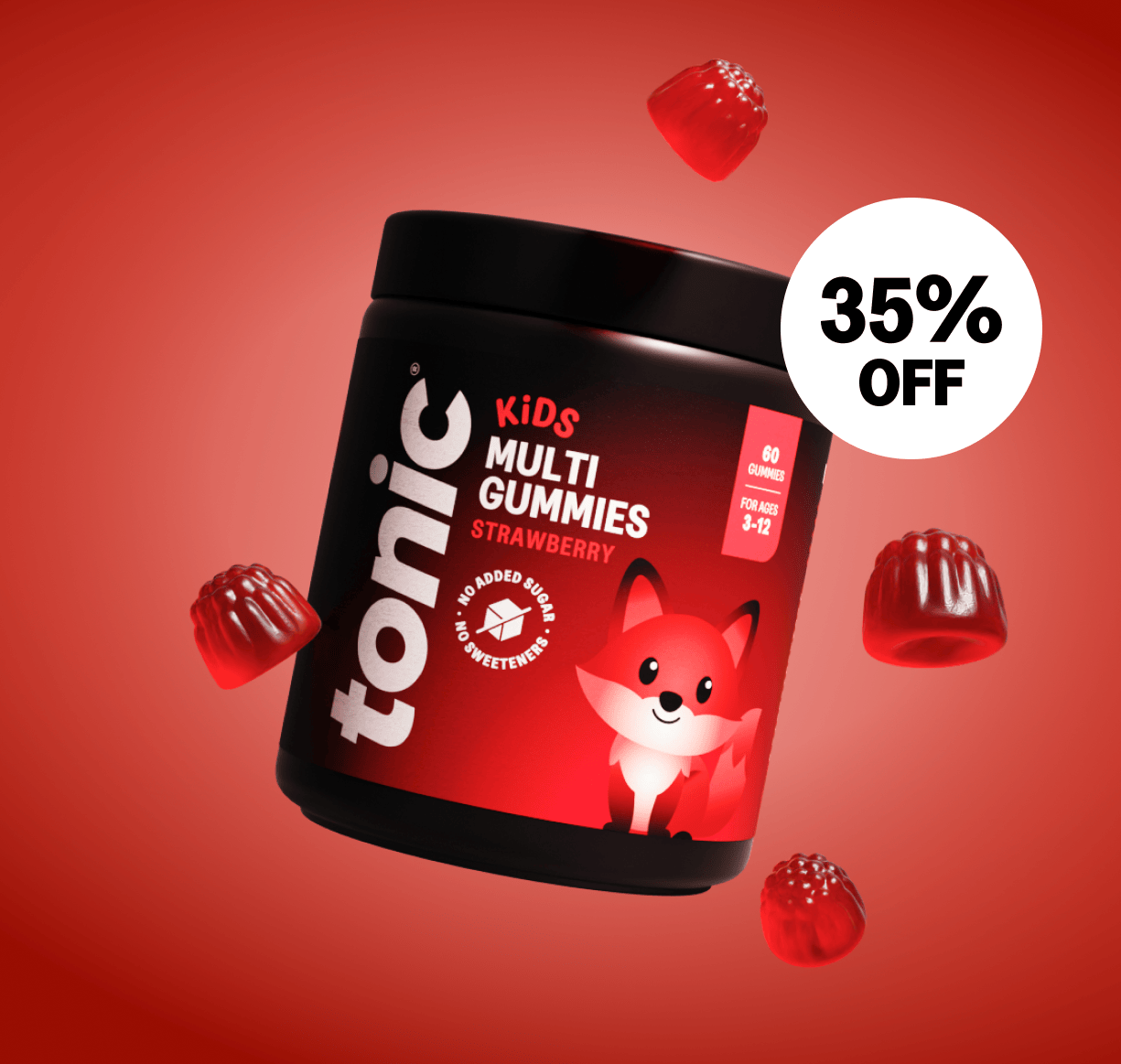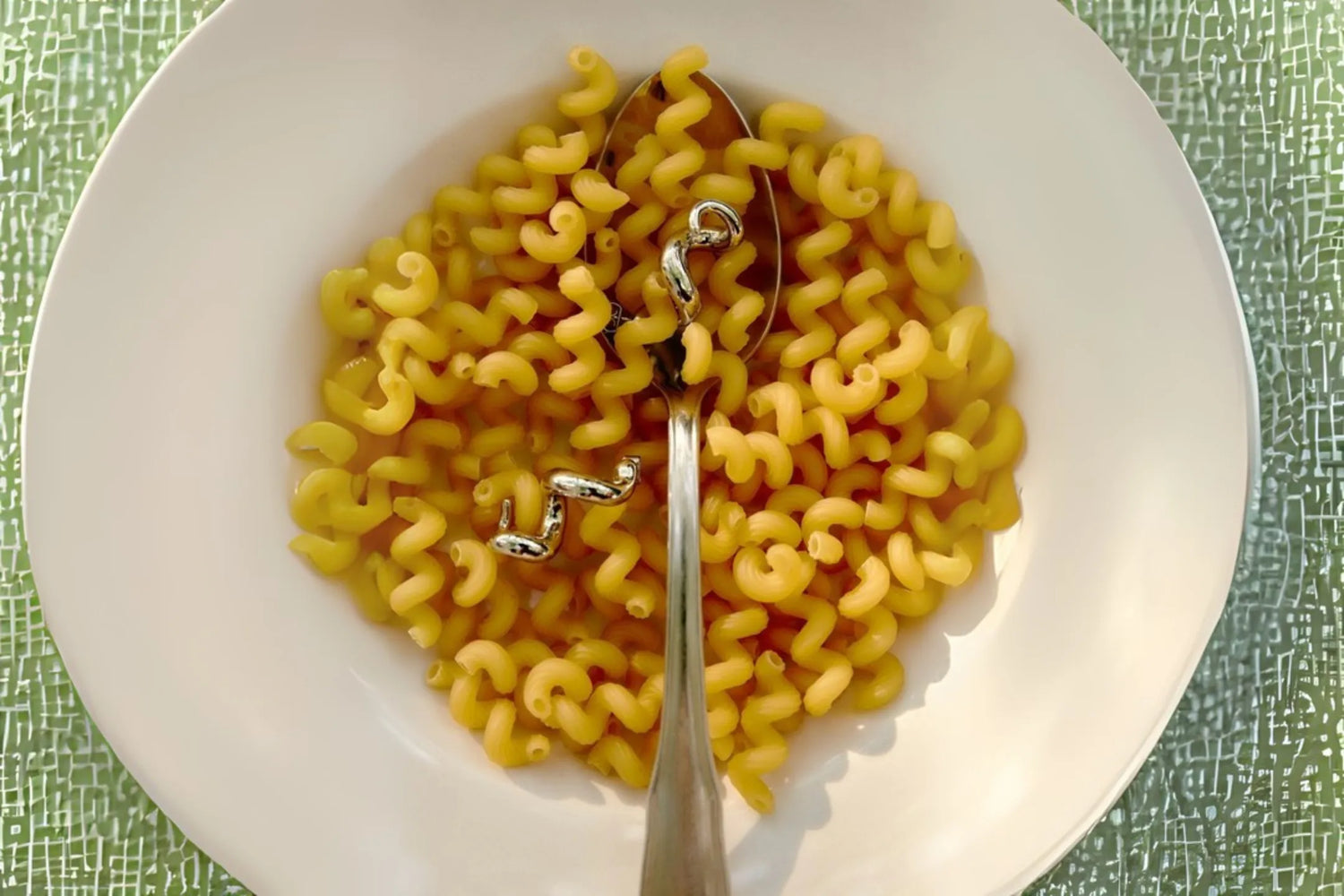Parenting comes with its fair share of worries, and having a picky eater at the table is a common source of stress. Toddlers are notorious for being fussy eaters, often gravitating towards chicken nuggets and fries over anything else.
In this blog post, we'll share our top ten tips and tricks for making mealtimes easier and more enjoyable for both you and your child. You'll find advice on how to deal with a picky eater and when a children's multivitamin might be beneficial to cover your little one’s nutrient bases. Let's navigate the picky eating phase together with less worry and more joy.
What is a Picky Eater?
Young children who exhibit selective eating habits, commonly known as picky eaters, often show a strong preference for certain foods while avoiding others. This selectivity can range from children who stick to a limited set of favorites to those willing to explore a wider variety yet still have their no-go items.
It's natural for children to go through phases of pickiness, but naturally it can lead to moments of stress for parents concerned their little one isn’t getting the nutrition they need.
Picky eating manifests in various ways, including:
- Only has a small rotation of preferred foods and is unwilling to try new options
- Adventurous eaters who, despite their willingness to explore, still has some specific foods they don’t like
- Those who rejects all foods except for a few specific items
- Slow eaters who take an extended time to finish meals
- Fast eaters who wolfs down their food
While picky eating is normal behavior for young kids, often linked to children's desire for independence, most kids outgrow the power struggle as they approach school age.
However, if your kid is not getting sufficient nutrient intake, it’s undoubtedly a problem. Let's delve into what may happen if your little one doesn't change their fussy eating habits.
Wondering what might happen if your little one keeps up their picky eating ways?
It's super important to make sure they're still getting all the good stuff their bodies need to thrive. These deficiencies aren't just minor hiccups in your child's diet; they can impact crucial aspects of their development and health.
A recent study showed, British five-year-olds are up to 7cm shorter than children of the same age in Europe. Experts are suggesting nutrition (or lack of) could be stunting the growth of children in the UK.
To give you some examples of critical nutrients often missed by picky eaters:
- Vitamin D3: This isn't just any vitamin; it's a superstar for mood regulation, learning, and concentration. Think of it as the brain booster in your child's diet… but if Salmon and Mushrooms aren’t your kids favourite, they’re probably missing out.
- Vitamin B12: Essential for repairing nerve cells and churning out red blood cells, B12 is like the body's repairman and manufacturer rolled into one. Liver, Beef , Oysters, Clams and Tuna are all great sources but it’s easier said than done trying to incorporate that into their diet.
- Vitamin B6: A key player in immune response and brain development, B6 is the shield and brainpower enhancer for your little ones. Dark leafy greens like spinach are your friend here but how many times can we have that fight with our little loved one.
And here's something else: being picky can sometimes make social situations a bit awkward, especially if they're feeling a bit left out during snack time with friends. Plus, worrying about what's for dinner can be a bit of a stresser for them.
10 Expert Tips on How to Deal with Picky Eaters
Dealing with a picky eater can be a bit of a headache, right? You're all too aware of the rainbow of nutrients they need, yet they're stuck in a loop of their few favorite foods, day after day.
If you're at your wits' end trying to broaden your little one's culinary horizons and pack in those essential nutrients crucial for their growth and development, don't fret! Here are 10 expert tips to gently nudge them towards a more varied and nutritious diet:
1. Give them a Multivitamin
Kicking things off, your little one doesn't have to miss out because they're fussy with food and aren’t getting the essential nutrients they need, why not try adding a children's multivitamin to their routine? It's a great safety net to make sure they're getting everything for their overall health and development, especially on those days when their menu isn't the most diverse.
Tonic’s Multivitamin Gummies come in Strawberry flavour (which taste like Strawberry laces) and have been taste tested by over 2000 kids and parents alike so your little one is more likely to take them every single day. Plus they’re made with all-natural ingredients, have no added sugar and no artificial sweeteners so you can be sure they’re safe and healthy.
Tonic’s Multivitamin is specifically formulated for kids aged 4-12 and Tonic’s Adult Multivitamin is for kids 12+. And with just 2 Tonic Multivitamin gummies a day, you’re giving your child the nutritional value equivalent to:
- 200 mushrooms 🍄
- 20 apricots 🍑
- 6 cups of broccoli 🥦
- 1 cup of asparagus 🥗

2. Introduce new foods slowly
Take it slow and steady when it comes to new foods for your little one. It might take quite a few attempts before they're open to giving it a go. According to Lerner & Parlakian (2007), kids might need to see a new food on their plate 10-16 times before they decide to take a bite. So, keep introducing those new flavors, and sooner or later, they're bound to discover a new favorite.
Take broccoli, for example. If it's a no-go the first time, don't give up! Next time, shake things up by serving it roasted with a sprinkle of cheese or lightly steamed with a tasty sauce. Who knows? It might just become the next big hit.
3. Involve your child in meal prep
Kids are more likely to eat something they've helped prepare. Let them pick out veggies at the store, wash the produce, or mix ingredients. Help them explore a variety of foods and understand where their meals start their journey.
4. Limit snacks and drinks
It goes without saying but too many snacks or drinks close to meal times can decrease hunger. Limiting these ensures your child is hungry enough to try new foods at mealtime.
5. Make food fun
Mealtime doesn’t have to be all serious and no play. Why not set up a mini tasting booth right at your dining table, where your kids can embark on a little expedition through an array of fruits and veggies?
Get creative and bring some playful energy to the table with games like "food bingo" or mystery taste tests. It's a surefire way to keep their curiosity piqued and their taste buds ready for new adventures.
6. Establish a mealtime schedule
Creating a consistent mealtime schedule can work wonders in easing the stress and making the whole experience more predictable for your little ones. When they know what to expect, they're more at ease and open to experimenting with new flavors. Consider setting specific times for meals, gathering the whole family at the table, and keeping distractions like the TV to a minimum.
7. Encourage independent eating
It's easy to fall into the trap of relying too much on finger foods, which can inadvertently narrow your child's food preferences as they get used to being fed by someone else.
Let them eat on their own, particularly as they're transitioning to solid foods. This approach hands them the reins, allowing them to explore flavors and textures at their own rhythm.
8. De-emphasize dessert
Offering sweets like cake or cookies as a prize for clearing their plate is a common tactic among parents. But, this approach might send the message that desserts are a special treat reserved for those who finish their entire meal.
This can increase your child's desire for sweets and decrease their interest in other healthy foods.
9. Mix in their favorites with the less-loved
A clever trick to get your kids to branch out with their eating is to blend their go-to favorites with those not-so-popular items.
If chicken nuggets are the star of their food world, try giving them a homemade twist with a crunchy coating of breadcrumbs and a sprinkle of Parmesan for an extra flavor kick. Another sneaky move is to blend veggies into a smooth puree and mix it into sauces or soups. They'll be soaking up all that good nutrition without even a hint of suspicion!
10. Avoid pressuring your child to eat
Pushing your child to eat can often backfire, making them even more reluctant to explore new tastes. If they're not feeling hungry, it's okay to let it be. Should they turn down a meal, there's always another opportunity to try. Consider offering a light snack a couple of hours before mealtime to stoke their appetite, making them more open to trying something new.
Remember, the goal is to create a positive mealtime atmosphere and gradually expand your child's food preferences. Patience and consistency are key. Every child is different, so what works for one may not work for another. It's about finding the balance that works for your family.
Tonic's Multivitamin Gummies
Tonic's Multivitamin Gummies is an all-round vitamin packed with 12 high-impact essential vitamins, minerals and plants, expertly formulated to transform your child’s whole-body health.
Fuel their health without the sugar.
🌱 2 months of 14 vitamins and minerals.
🔬 Fuel their day, growth and development.
🚫 No added sugar, no sweetener, vegan.








Leave a comment
All comments are moderated before being published.
This site is protected by hCaptcha and the hCaptcha Privacy Policy and Terms of Service apply.